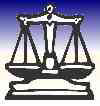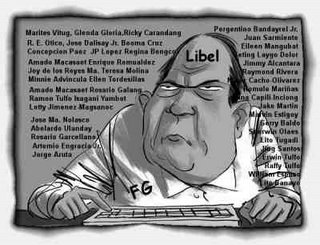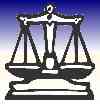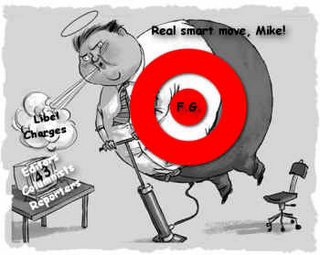The silence of the Constitution is for the Congress to fill.
 I'm having a nice lil laugh with myself now that I think I've found a really powerful way to think of the "voting separately" or "voting jointly" conundrum allegedly posed by the ambiguities in Article XVII Section 1 of the 1987 Philippine Constitution:
I'm having a nice lil laugh with myself now that I think I've found a really powerful way to think of the "voting separately" or "voting jointly" conundrum allegedly posed by the ambiguities in Article XVII Section 1 of the 1987 Philippine Constitution:Any amendment to, or revision of this Constitution, may be proposed by (1) the Congress, upon a vote of three-fourths of all its Members; or (2) a Constitutional Convention.It's very simple really.
The ambiguity is for the Congress to resolve by adopting its "Implementing Rules and Regulations" for whenever the Congress works on amendments to, or revision of the Constitution. I think it is beyond the ability, the power and the jurisdiction of the Supreme Court to decide for the Congress in an "advisory opinion" which rule is "Constitutional" because either rule could be constitutional. It is to the Congress, not the Supreme Court, that the Constitution gives the power to propose changes to the Constitution. "Voting separately" or "voting jointly" are merely two different modes of implementing the required three fourths majority rule.
When the Congress, acting as a Constituent Assembly, adopts its Rules for the purpose of creating, deliberating, refining and proposing amendments to or revision of the Constitution, both Houses of the Congress must concur in what those Rules are, even if one of those Rules is that they will vote jointly when it comes to debating and approving proposed amendments and revisions. But metaphysically speaking, there is no way, for the Congress to adopt the Rules by which they will operate as a Constituent Assembly other than with the concurrence of both Houses voting separately to adopt such Rules.
Just as any Constitutional Convention would be expected to remedy the obvious and complete silence of the Constitution on its operations by adopting its Rules for the purpose of deliberating and voting upon proposed amendments or revision, so too, the Congress can and should remedy the silence and ambiguity of the Constitution on the matter of voting separately or voting jointly.
The matter of "voting separately" or "voting jointly" does not have to be settled by the Supreme Court. In fact, it should NOT be settled by the Supreme Court, but by the Congress. Since the Constitution indubitably endows the Congress with the power to propose amendments to or revision of the Constitution, it also empowers the Congress to do all things necessary and sufficient in the exercise of this power, including the adoption of the Rules that govern the Congress when it does exercise this power. Notice that even the Supreme Court does not have this power!
I assert that the Congress can decide, as a matter of its Rules, HOW the Congress shall exercise this power which is explicitly granted to it by the Constitution, including whether both Houses of the Congress should vote separately or jointly when approving the same, as long as the Congress complies with the three-fourths majority rule.
To prove this assertion, merely consider two questions:
Q1: Would it be unconstitutional if both the House and the Senate passed Joint and Concurrent Resolutions adopting the rule "voting jointly" when it proposed amendment or revision?
Q2: Would it be unconstitutional if both the House and the Senate passed Joint and Concurrent Resolutions adopting the rule "voting separately" when it proposed amendment or revision?
The answer to both Questions is indubitably NO since the Constitution is completely silent on which way the Congress should vote, separately or jointly. Even if the Constitution requires that the arithmetic requirement of three-fourths majority rule must apply, the Congress can comply with this numerical requirement of the Constitution whether it votes separately OR jointly.
ERGO, it would be a grave abuse of the Supreme Court's discretion, amounting to an unconstitutional excess and/or lack of jurisdiction, for it to dictate to the Congress a priori whether it is jointly or separately. That choice, in my opinion, is purely the prerogative of the Congress. The most I think that the Supreme Court can do, if and when a real case and controversy should arise, is to decide whether or not the Congress has complied with the Constitution.
For example, if a mere House Resolution is submitted to the Comelec for plebiscite, such a Resolution is obviously and trivially insufficient in form to qualify as an Act of the Congress proposing amendments to or revision of the Constitution. Even if a House Resolution is signed unanimously by all the Members of the Lower House, it will only ever be an ACT of the Lower House and not an ACT of the Congress.
The ACT of proposing amendments to or revision of the Constitution for ratification at plebiscite is granted to only two very specific entities whose Members or Delegates are all democratically elected representatives of the people --- the Congress or a Constitutional Convention.
It is not for the Supreme Court to tell the Congress what Rules it must adopt since the Constitution actually allows either voting rule -- voting jointly or separately, to be adopted by the Congress.
Now it may not seem equally remarkable, but there is an even muter Constitutional silence and ambiguity in the matter of how a Constitutional Convention is supposed to approve proposed amendments or revision. But no one worries about this other ambiguity because we assume, if a ConCon is ever elected and convened, that the elected Delegates of the Convention will organize themselves as a collegial body and adopt RULES by which they agree to operate. Since all the Delegates are equal upon election to the ConCon, the principle of "One Delegate, One Vote" means that the Rules of the Convention will themselves first be approved by a simple majority rule of 50% plus one Delegate. Note that the contents of the Rules themselves are entirely up to the Convention. It can adopt a rule which says that the Convention will approve amendments or revisions only upon a simple majority vote, or two-thirds majority, or three-fourths, or four-fifths of all its Delegates. Or the Convention can decide that all votes must be unanimous. Since the Constitution empowers ConCon to amend or revise the Constitution, it certainly also grants the ConCon the power to adopt such Rules and operating policies and procedures as are necessary for it to exercise such power.
In other words, the Constitution expects a Constitutional Convention to resolve the total ambiguity which exists in the Constitution itself as regards to the ConCon's workings.
I think the same principle applies exactly to the controversial ambiguity over voting separately or jointly in Section 1(1) when the Congress proposes amendments or revisions. It is the Congress itself, acting as a Constituent Assembly (ConAss), which can swiftly, easily and completely resolve and remove the AMBIGUITY in the provision, simply by adopting the Rules to be enforced when the Congress proposes amendments to or revision of the Constitution.
It is entirely conceivable and permissible that the Senate and the House would both CONCUR on "voting jointly" as the rule to approve amendments or revisions. It is equally conceivable and permissible that they would adopt the very different rule of "voting separately."
But it is inconceivable and impermissible that EITHER rule could be adopted by the Congress for the exercise of its right to amend or revise the Constitution, without both Houses of the Congress concurring to adopt such Rule.
In other words, there is no possible exception to "voting separately" when the Congress, acting as a Constituent Assembly, adopts its Rules for the purpose, even if one of those Rules is that they will vote jointly when it comes to approving proposed amendments and revisions!







